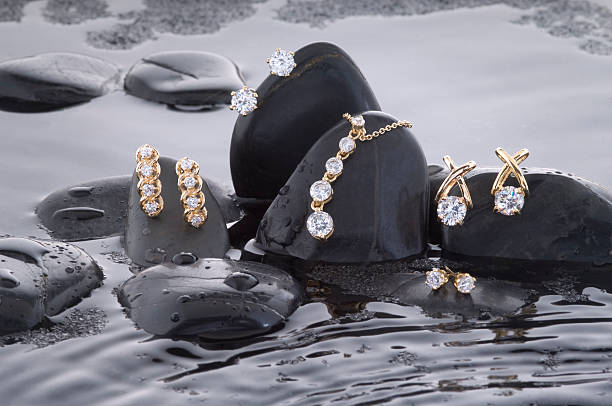Insights on Diamond Clarity Evaluating All Entries

Most seasoned diamond buyers and sellers are aware of the "4 Cs" used by jewelers to evaluate diamonds: color, cut, clarity and carat. When it comes to diamond clarity evaluating, it's important to understand exactly what gemologists mean by "clarity." Here are essential facts to know about diamond clarity to help you in your quest of buying and selling beautiful jewelry.
How Gemologists Define Diamond Clarity
Part of the beauty of a diamond is its transparency, with which light passes through. The meaning of diamond clarity evaluating is closely tied to checking for lack of flaws such as tiny cracks in a diamond. These flaws, called inclusions, can add up to less value if the diamond is saturated with them. The ideal diamond that carries more value is one with limited or no visible inclusions–even under a microscope. That's why the highest clarity grade is "flawless," which is rare.
The standard diamond clarity grading scale, formulated by the Gemological Institute of America, provides seven grades for diamond clarity:
- FL (flawless), IF: highest grades
- VVS1, VVS2: very difficult to see flaws under 10X magnification
- VS1, VS2: slightly visible inclusions with 10X microscope
- SI1, SI2: inclusions not visible to the naked eye
- I1: inclusions visible to the naked eye
- I2: inclusions more visible to the naked eye
- I3: inclusions can be seen from a distance (lowest grade)
Clarity Under the Microscope vs. The Naked Eye
Gemologists determine diamond clarity grading by both examining the stone under a 10X microscope and with the trained naked eye. This test allows for detecting inclusions at the microscopic level and without a magnification tool to form an objective and educated opinion about the stone's clarity. The gemologist takes into account the visibility, location and type of inclusions when determining a diamond clarity grade.
What to Know About Inclusions
Inclusions are generally culprits that reduce diamond value, except when they're so unique they contribute to the gem's aesthetic effect. In some cases inclusions can add value if they look artistic enough. There are also examples when inclusions don't make a difference, such as if the gem were worn by a famous person. Furthermore, if the diamond was issued by a famous brand, it may still command value regardless of inclusions.
As far as clarity, if you seek the clearest diamonds, then you'll want no inclusions visible under a microscope. The only problem is that flawless diamonds are very expensive. So if you want to balance clarity with cost, you'll still have a clear diamond to the naked eye if it's graded SI2 or better. Most people won't know the difference and you can tap into a more affordable range of diamond selection.
Conclusion
Transparency, along with lack of inclusions and surface blemishes, are what define diamond clarity evaluating among reputable jewelers. Contact us at Ralph Mueller & Associates for more information on what affects the value and attraction of a diamond. We have served the Arizona jewelry community for over 30 years and are happy to bring you more valuable insights.